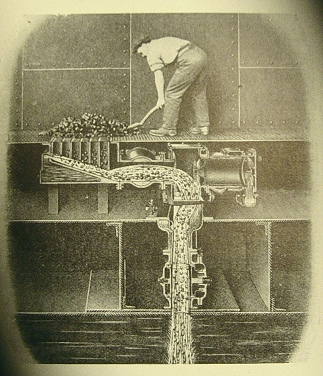| ultramarin marine translations |
| ultramarin.online | ||||
| asejektor asschuif aswip asstortkoker |
de asejektor is een inrichting om as en sintels van de stookplaats van met kolen gestookte stoomketels over boord te storten. Hij bestaat uit een gegoten ijzeren of stalen cilindrische pot, waarop een stevig rooster is aangebracht, en waarop de sintels stuk geslagen worden. De pot is door een schuin omhoog lopende pijp met een klep in de scheepshuid verbonden. In de pot bevindt zich een spuitstuk dat voor een krachtige waterstraal zorgt zodat de stukgeslagen sintels naar buiten storten. | |||
| Aschenloch Aschauswurf |
auf Dampfern das Loch in der Bordwand, durch das die Asche nach außenbords befördert wird | |||
| ash chute ash ejector |
in its simplest form a hole in the hull to eject ashes; a more complicated installation is a cast iron bucket for the ashes with a grill on top on which the cinders can be reduced to small pieces. The pot runs up and down to the mentioned hole where the bucket can be emptied out into the water. | |||
| éjecteur des cendres éjecteur des escarbilles escarbilleur monte-escarbilles |
||||
